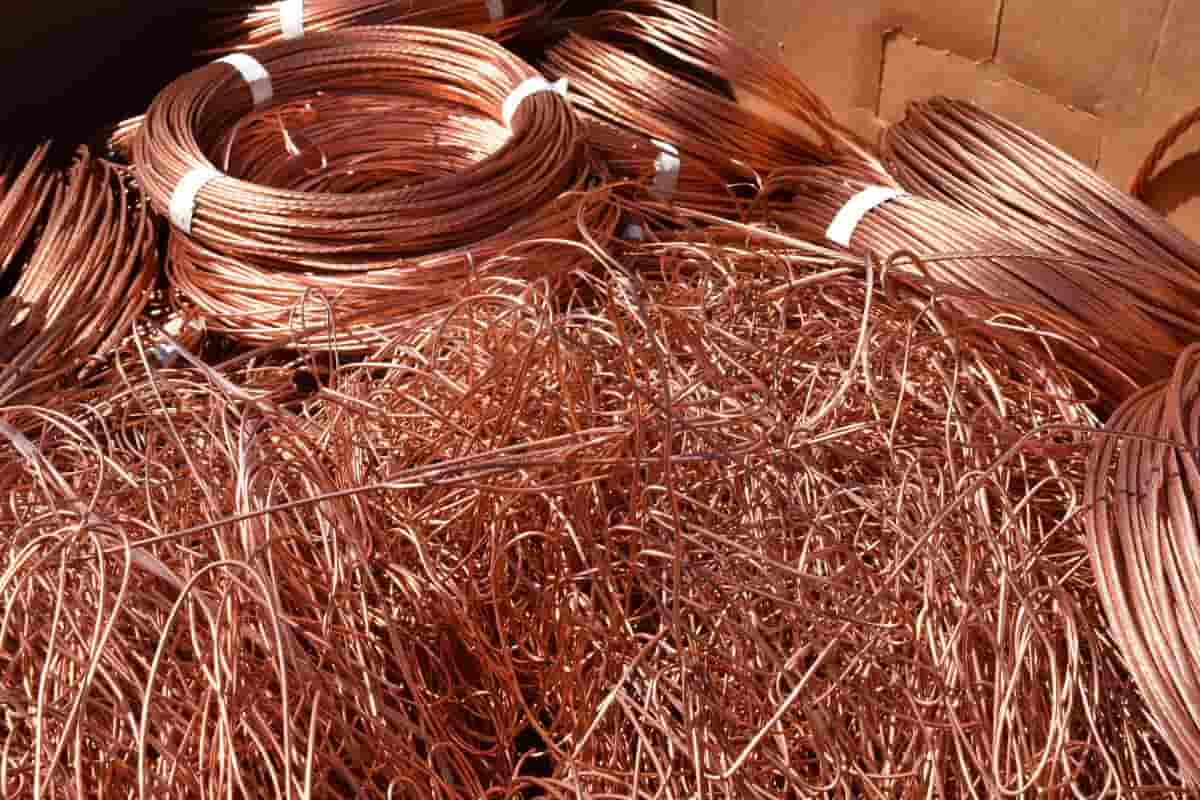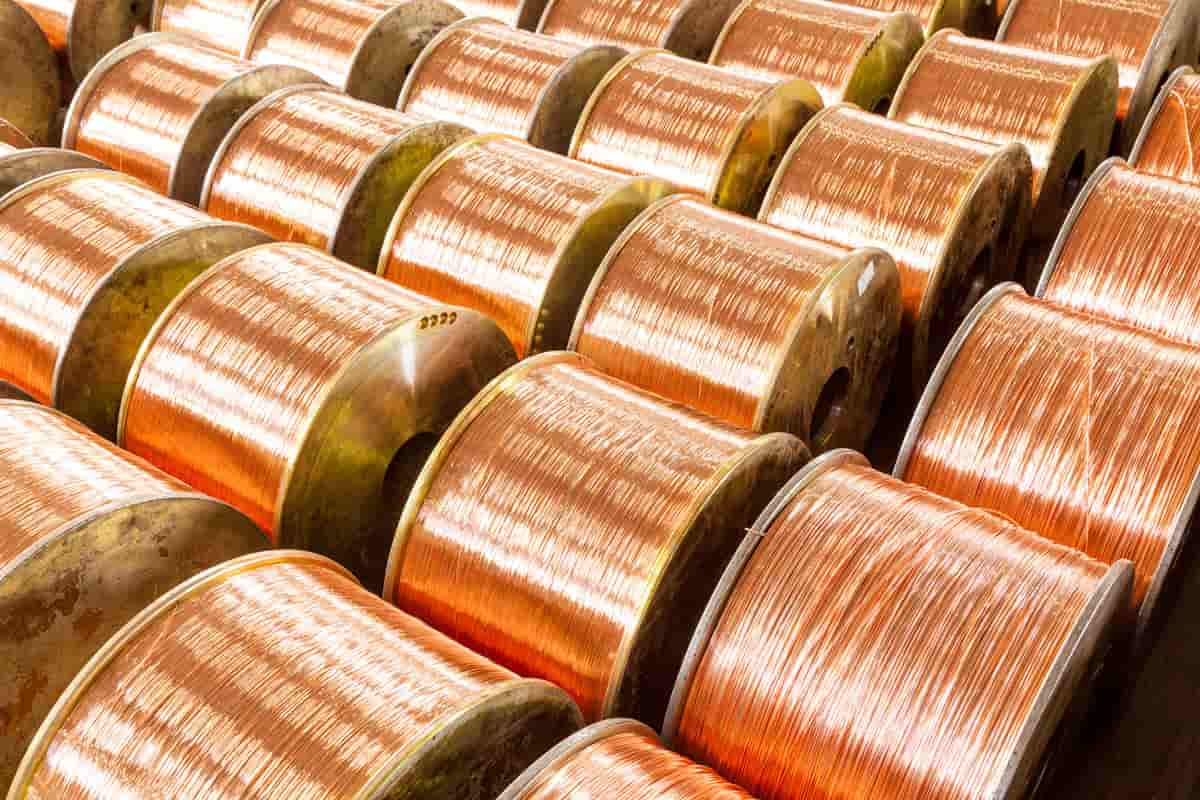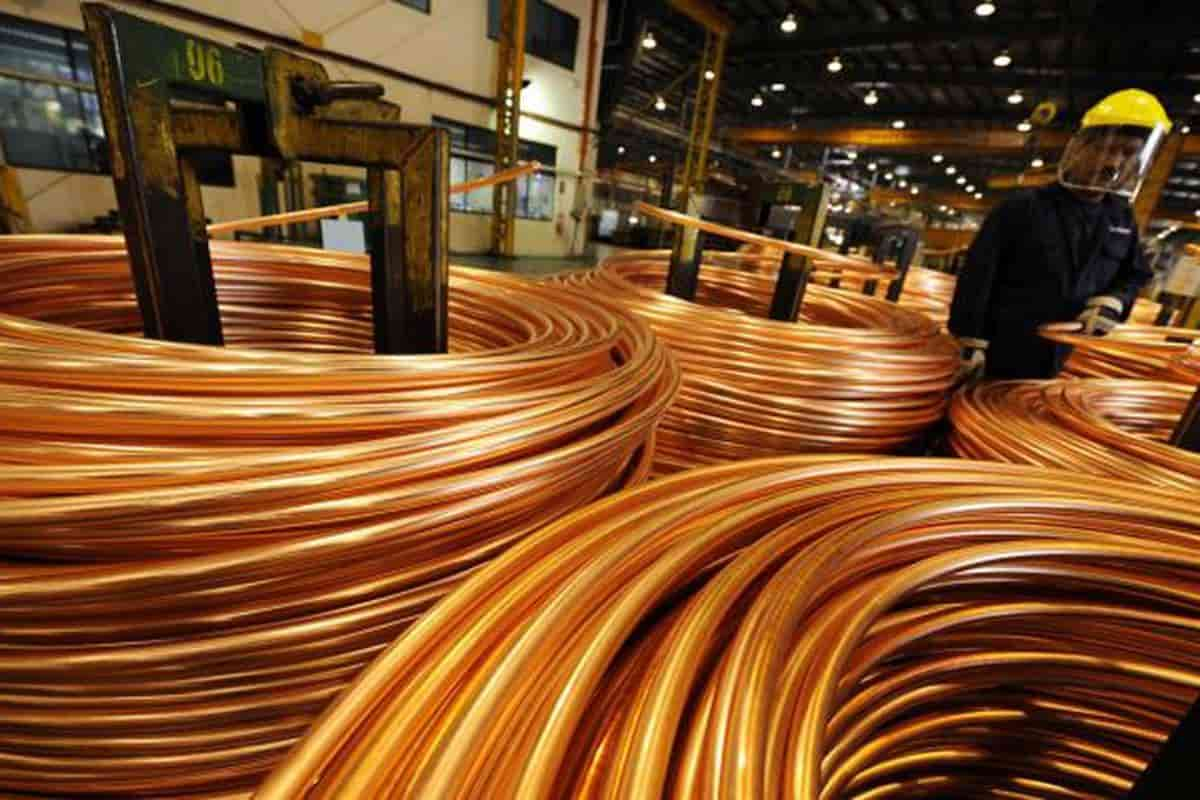The path to changing the world is all about copper. As the world moves towards zero carbon, digital revolution, green industry, and clean transportation, it needs copper more than ever. The development of China, electric vehicles and robotics are the three major drivers of copper metal demand growth over the next 10 years, so the red metal plays a vital role in the evolution of the world. This situation has led to extensive investment in copper mining and processing by countries around the world, making the investment prospects of mining, processing, and complementary circles brighter. However, it is wrong to think that the age of steel and copper will end in the world and that each metal will play its part in response to changes in production. The reason for this is the difficulty in achieving the zero-carbon goal. A graph drawn by four different economic bodies including Mackenzie, Market Watch, Research and Market and Fitch shows that copper will be in more demand than before due to four main reasons, but that situation will face problems until at least 2025 , due to the lack of discovered reserves of this metal. This factor will prevent the copper price from falling sharply. Fitch Research highlighted that lower-than-expected reserves, lower-than-expected production, faster world economic growth and government stimulus plans will be the most important factors affecting global copper demand growth in the coming years.  Copper prices hit record highs in 2021 and are likely to remain stable through the end of 2022, according to Fitch's forecast. The cause of the problem will be a possible increase in mining, which is a healing factor for the copper-consuming industry on the other side of the industry. Analysts believe that copper prices will not return to the previous levels of 1995-2004 until further notice, as the world is in the era of energy transition and transition to stable low carbon. One of the reasons for the continued high copper prices in the world market is the predictable shortage of production, which must be extended in the medium term through the reopening of closed mines, the gradual development of existing mines, and plans to extend the life of extracted veins. Meanwhile, by the end of 2021, the price of copper has risen by about 25% compared to 2020, with the metal trading near $11,000 a ton at some point this year. At the time, there was a lot of talk about copper rising to $15,000. Of course, things soon changed direction and demand trends pushed copper to the $9,500 limit. This situation is due to reduced intermediary demand in this market and the flow of funds to other markets. In previous surveys, the forecast for copper price growth was for the metal to rise to a level of $7,200 a ton. However, copper has finally settled in the $9,200-plus range now. Fitch's forecast, adjusted by the London Metal Exchange (LME) index, sees prices falling to $7,500 a ton.
Copper prices hit record highs in 2021 and are likely to remain stable through the end of 2022, according to Fitch's forecast. The cause of the problem will be a possible increase in mining, which is a healing factor for the copper-consuming industry on the other side of the industry. Analysts believe that copper prices will not return to the previous levels of 1995-2004 until further notice, as the world is in the era of energy transition and transition to stable low carbon. One of the reasons for the continued high copper prices in the world market is the predictable shortage of production, which must be extended in the medium term through the reopening of closed mines, the gradual development of existing mines, and plans to extend the life of extracted veins. Meanwhile, by the end of 2021, the price of copper has risen by about 25% compared to 2020, with the metal trading near $11,000 a ton at some point this year. At the time, there was a lot of talk about copper rising to $15,000. Of course, things soon changed direction and demand trends pushed copper to the $9,500 limit. This situation is due to reduced intermediary demand in this market and the flow of funds to other markets. In previous surveys, the forecast for copper price growth was for the metal to rise to a level of $7,200 a ton. However, copper has finally settled in the $9,200-plus range now. Fitch's forecast, adjusted by the London Metal Exchange (LME) index, sees prices falling to $7,500 a ton.  According to Fitch and some other analysts, the figure will stabilize at the $6,700 level for the long-term but is likely to remain high in 2022. The institute believes that the demand for copper will continue to be at sizable levels due to the high demand for copper from green industries rising from 5% of total copper demand in 2021 to 20% in 2035. Of course, this issue will not cause volatility in copper prices and demand levels, especially since high shipping costs and the continued spread of the coronavirus around the world could weigh heavily on the metal's movements. Analysis of global trends shows that China, the United States, and the European Union remain the most important consumers of copper and enablers of the idea of a clean world based on new, carbon-free, and smart products. Products that use more copper and metals like cobalt, lithium, and tungsten. Although there are certain players in world copper production, which are distributed across five continents, the main players in supplying copper are active in the American continent, especially South America. New mines will be built and commissioned in the Philippines, China, Papua Guinea, Peru, Chile, Mexico, Argentina, and the United States by 2025, a new report from Market Intelligence shows, which will bring copper production to higher levels.
According to Fitch and some other analysts, the figure will stabilize at the $6,700 level for the long-term but is likely to remain high in 2022. The institute believes that the demand for copper will continue to be at sizable levels due to the high demand for copper from green industries rising from 5% of total copper demand in 2021 to 20% in 2035. Of course, this issue will not cause volatility in copper prices and demand levels, especially since high shipping costs and the continued spread of the coronavirus around the world could weigh heavily on the metal's movements. Analysis of global trends shows that China, the United States, and the European Union remain the most important consumers of copper and enablers of the idea of a clean world based on new, carbon-free, and smart products. Products that use more copper and metals like cobalt, lithium, and tungsten. Although there are certain players in world copper production, which are distributed across five continents, the main players in supplying copper are active in the American continent, especially South America. New mines will be built and commissioned in the Philippines, China, Papua Guinea, Peru, Chile, Mexico, Argentina, and the United States by 2025, a new report from Market Intelligence shows, which will bring copper production to higher levels.
The Golden Year of Copper 2021
Copper prices rose more than 24.7% in the final days of 2021 compared to 2020. A report on the COMEX Copper Price Index Macro trend website provides an interesting framework for analyzing copper prices over a 61-year period by examining each year's opening and closing prices. The period from 1960 to the end of 2021 shows that copper prices have experienced a 28-year downward trend from the end of the previous year and ended a 31-year game with prices higher than those at the end of 2020. last year. Interestingly, copper prices are up 50% in one year compared to the average annual prices in 2021 and 2020, which is a good indication of the metal's favorable conditions for price increases. Before that and in the most recent 60 years, in 2006 alone, copper prices rose more than 50% to more than 85%. The average price per pound (453 grams) of copper in 2021 will be $4 23 cents, with a 2021 low of $3 52 cents and a 2021 high of $4 76 cents, the website said. Analysts at global market indices such as CME Group predict the metal will average between $4.1 and $4.5 a pound of copper by the end of 2022. The number of copper transactions this year is the highest in the past six years. The prospect of increased demand and limited supply of copper ore appears to support peak forecasts of a permanent rise in copper prices. As we have seen over the past year (2021), prices have been highly cyclical and volatile, and there is no reason to assume this will not continue. The first reason for this is that the demand for copper is related to the cyclical and liquidity growth of business activity. Economic booms usually stimulate consumption, while recessions do the opposite. Corona has dealt one of the worst blows to copper in recent years and raised the price of the metal to $4,500 a ton. Due to the importance of the red metal throughout the economy, copper prices often serve as an economic wake-up call and a turning point in commodity markets. Boom and bust eras are predicted using the metal "copper" and its swings.  But a second and perhaps more important reason to focus on copper volatility is the nature of supply and demand. Historically high prices pave the way for future lows. how? By stimulating capitalists to discover resources and use new technologies that reduce the cost of copper mining and processing, such as flotation, fast melting, electricity, etc., it will pave the way for more supply and lower prices. On the other hand, higher prices may close the demand gap by increasing substitution. Back in the 1970s, the upsurge of world economic restructuring in the early 1980s confirmed the widespread use of aluminum wire, lower production prices and excessive consumption. So copper prices rose last year in part due to expected demand for U.S. infrastructure projects and the prospect of faster world economic growth. We'll have to wait and see if this persists. China currently accounts for more than 50% of global consumption and is currently developing some copper-hungry megacities and high-speed rail networks. The project includes a renovation plan for the Pearl River Delta region in eastern China and is scheduled to be completed by 2030. Available evidence suggests that a colony of nine cities with a population of 57 million is preparing for the digital revolution. In addition to these projects, the growing role of renewable energy has also increased copper consumption, as wind turbines and solar panels require more copper per unit of energy produced than conventional power plants. Likewise, electric and hybrid vehicles consume more copper than regular gasoline vehicles, and with the significant growth of such products, the copper market demand will continue to increase, and the demand for other metals used in the automotive industry, such as iron, will change.
But a second and perhaps more important reason to focus on copper volatility is the nature of supply and demand. Historically high prices pave the way for future lows. how? By stimulating capitalists to discover resources and use new technologies that reduce the cost of copper mining and processing, such as flotation, fast melting, electricity, etc., it will pave the way for more supply and lower prices. On the other hand, higher prices may close the demand gap by increasing substitution. Back in the 1970s, the upsurge of world economic restructuring in the early 1980s confirmed the widespread use of aluminum wire, lower production prices and excessive consumption. So copper prices rose last year in part due to expected demand for U.S. infrastructure projects and the prospect of faster world economic growth. We'll have to wait and see if this persists. China currently accounts for more than 50% of global consumption and is currently developing some copper-hungry megacities and high-speed rail networks. The project includes a renovation plan for the Pearl River Delta region in eastern China and is scheduled to be completed by 2030. Available evidence suggests that a colony of nine cities with a population of 57 million is preparing for the digital revolution. In addition to these projects, the growing role of renewable energy has also increased copper consumption, as wind turbines and solar panels require more copper per unit of energy produced than conventional power plants. Likewise, electric and hybrid vehicles consume more copper than regular gasoline vehicles, and with the significant growth of such products, the copper market demand will continue to increase, and the demand for other metals used in the automotive industry, such as iron, will change.
Boosting Copper Production in the World
On the supply side, the marginal cost of mining is likely to continue to rise. The concentration of primary rock is likely to continue to decline, while the time to mine development and discovery is always increasing. An important factor in boosting copper production has been resistance from environmental groups, as both mining and free smelting are very polluting activities, and the copper industry is likely to face more intense challenges in the coming years. Copper mining from open pit mines remains a serious problem. The reason for this is the release of sulfuric acid and heavy metals in the local environment. At the same time, this process releases a large amount of sulfur dioxide. As the developed world runs out of cheap reserves, production and refining are increasingly being moved to more volatile and volatile regions such as the Democratic Republic of Congo and even Afghanistan. China is trying to reduce the risk of operating in these environments by buying and operating its own mines and by offering incentives to host governments. The country even recently won a deal from the Taliban to protect its $3 billion copper mining project north of Kabul. However, the potential for unplanned disruptions in global copper production remains. This situation will force China to meet the demands of its global market in the shortest possible time. In theory, producers should be able to stabilize prices by keeping production at the demand level. A situation that rarely occurs in practice. Not only is it difficult to forecast consumption, but it also takes time to increase production. The development of new mines now takes more than 30 years, making it nearly impossible to coordinate additional production during periods of increased demand.  In addition, low prices discourage mining investment, although expanding capacity may be the logical case given the inevitable timing. There have been many attempts to manipulate the copper market through cartels, many of which have strongly affected short-term prices but little in the long-term. There are too many potential copper resources to fully control the world's primary and secondary production. As many producer cartels have learned, the lure of high prices often undermines the discipline necessary to control the market in the long term. In the end, it is the size and scale of the automotive industry's transition from polluting to electrical products, and the speed at which digital infrastructure develops, that will determine the speed at which the world transitions to a low-carbon era in 2030.
In addition, low prices discourage mining investment, although expanding capacity may be the logical case given the inevitable timing. There have been many attempts to manipulate the copper market through cartels, many of which have strongly affected short-term prices but little in the long-term. There are too many potential copper resources to fully control the world's primary and secondary production. As many producer cartels have learned, the lure of high prices often undermines the discipline necessary to control the market in the long term. In the end, it is the size and scale of the automotive industry's transition from polluting to electrical products, and the speed at which digital infrastructure develops, that will determine the speed at which the world transitions to a low-carbon era in 2030.
- Conclusion
All information mentioned above providing to the buyers who want to know and buy metal steel products and with professional and innovative thoughts, passionate and enthusiastic attitudes. Our vision is to be a standard for customized products and quality services so that we can build a good brand image of our company in the national and international market with competitive prices and cheap shipping services. We are eager to do what we do and strive to further the needs of our customers by providing quality products and services. For more information kindly visit our site.
